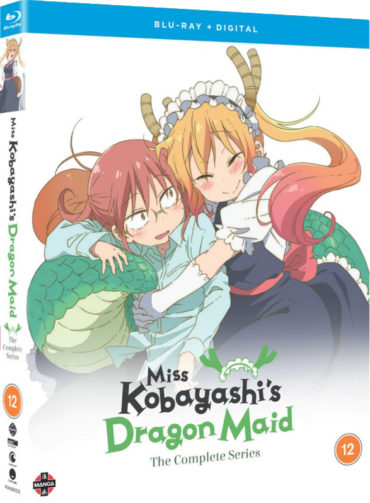Miss Kobayashi’s Dragon Maid – The Complete Series Review
Waking up on a relatively average morning, you slowly remember the night before. After a hard day at work, you spent the evening at your local pub with your workmate, getting absolutely hammered. Somehow you ended up making it home, although you have a vague recollection that you took a walk up some mountains and had a chat with some random woman along the way. Hazily, you shake the memory off and go about your daily routine, before making your way out your front door, only to be greeted by a humongous green dragon!
While most people would assume that they were still drunk, this is not the case for twenty-something IT worker Miss Kobayashi, who, after drunkenly saving the female dragon Tohru from a potentially fatal wound, ends up inviting her to her home to work as a live-in maid. While initially trying to get out of it, Kobayashi reluctantly allows Tohru to stay, a decision which ensures her life will never be the same again!

Kyoto Animation’s adaptation of coolkyousinnjya’s manga is both a funny and relaxing slice-of-life series that follows Kobayashi’s new life with Tohru and the rest of her dragon friends – the cute and adorable Kanna, the flirtatious and well-endowed Quetzalcoatl, the dark and edgy Fafnir, and warrior-turned-office worker Elma – who have each followed Tohru to our world for some reason or another. Each episode focuses on a particular escapade that ends in a funny joke or a meaningful moment between the gang that ends up bringing them closer together; whether that is Tohru trying to learn to be a maid, Kanna going to school, or Fafnir attending Comiket for the first time, tagging along with Kobayashi’s close colleague Makoto Takiya, who is a massive otaku.
While the plot doesn’t go much further than this, delivering a whimsical tale of daily life, it’s the character-driven comedy that will keep holding your attention as you progress through the series, as it shows each member of the cast adapting to their new situation in a variety of both funny and heart-warming ways.
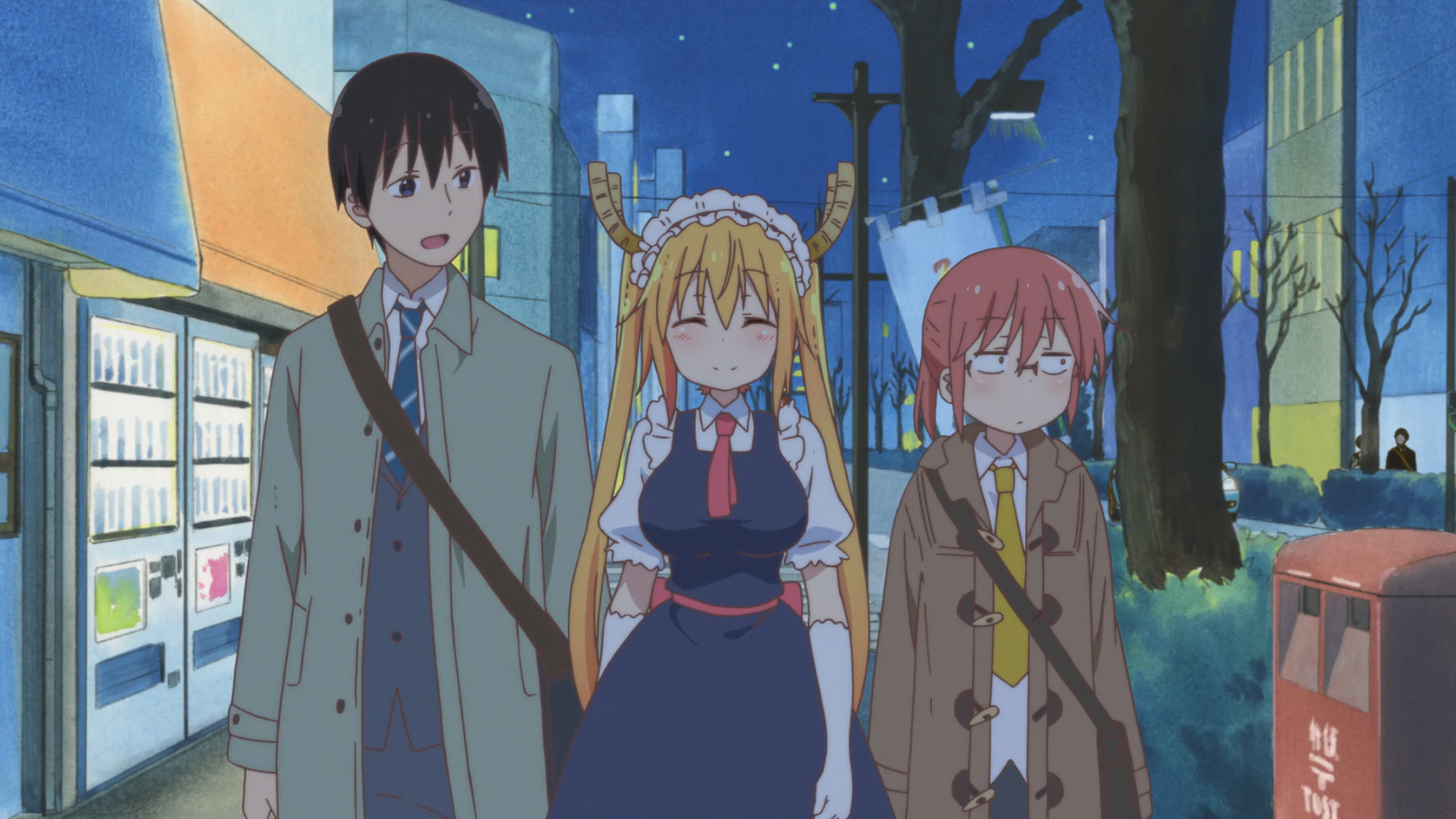
For each of the dragons, it’s very much a case of being a fish out of water, as while they can disguise themselves as humans, things don’t always go quite to plan, with them frequently messing up, going overboard and risking blowing their cover, which causes Kobayashi more trouble than what it’s probably worth.
Tohru is often the worst for this as she struggles at first to understand the boundaries between her world and the human world, whether that’s using her dragon form to fly everywhere, or firing a powerful blast into the sky to banish some rainy weather so she can get the laundry dry, or the constant attempts at trying to get Kobayashi to eat her tail. While at first she can seem rather pushy and tactless, she quickly becomes very endearing, as you know that in the end she means well; and while some of the jokes around her do become running gags, it’s rather hard to get tired of them when they are that funny.
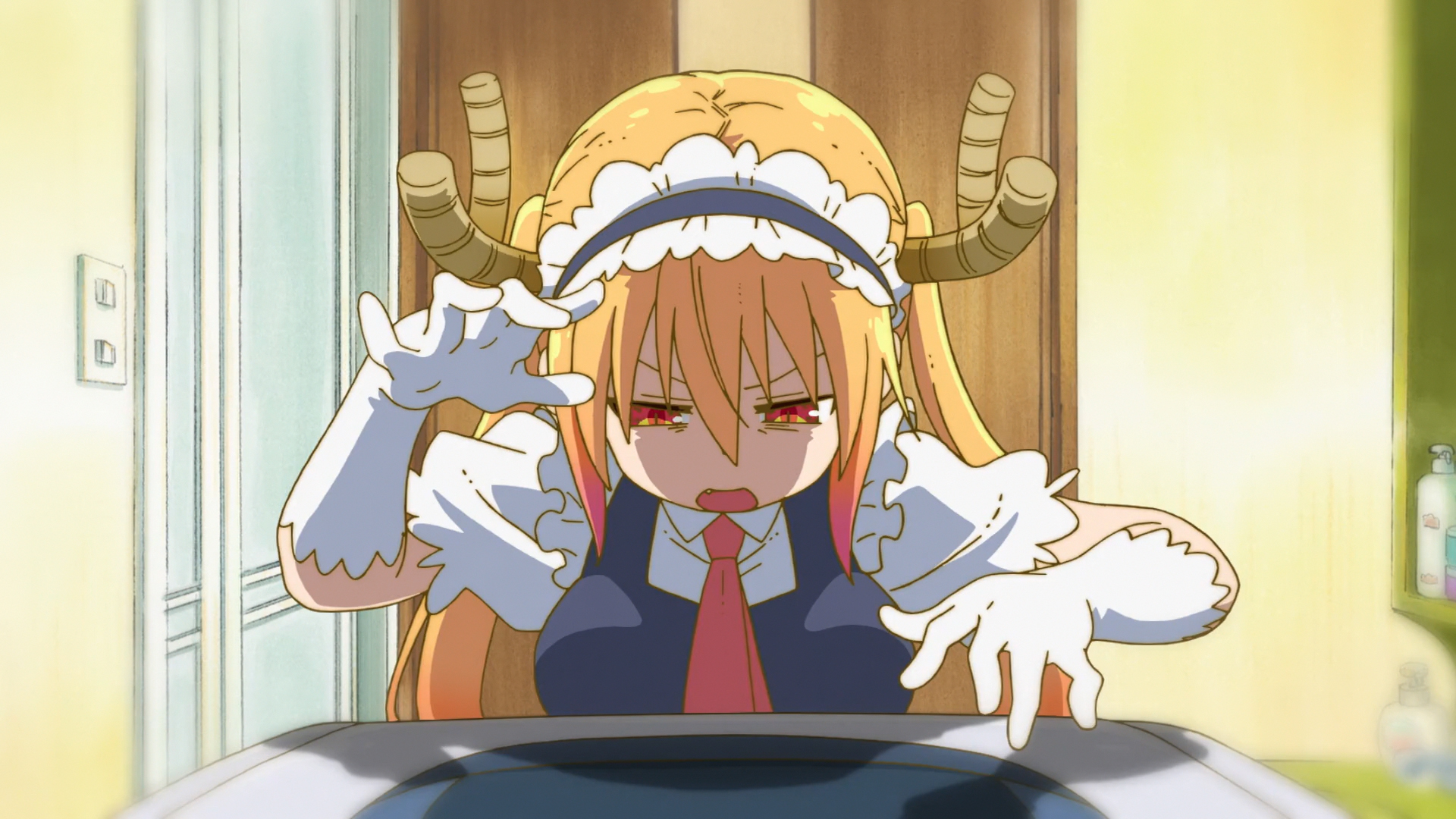
The same can’t be said for Quetzalcoatl (or Lucoa as she’s known as for short), who sadly only exists to be the token fanservice character, with her running gag being turning up wearing pretty much next to nothing and being carried away by someone telling her to cover herself up. While this gag gets tiresome in itself, it doesn’t help that putting her in compromising situations with the son of Kobayashi’s boss, Shouta, is more than a bit creepy, considering he’s only around 10 years old.
Thankfully, the series redeems itself in its treatment of its other child characters, particularly with Kanna, as with her being a young dragon, her child-like human form is used to show the pure innocence and joyful wonder of childhood, as she discovers the world around her – going to school, making a bunch of human friends, and finding an infatuated best friend in Riko Saikawa. She’s probably my favourite character in the series because of this, as well as how she really turns the cast into a family of sorts, as she looks towards Kobayashi as some sort of surrogate mother.
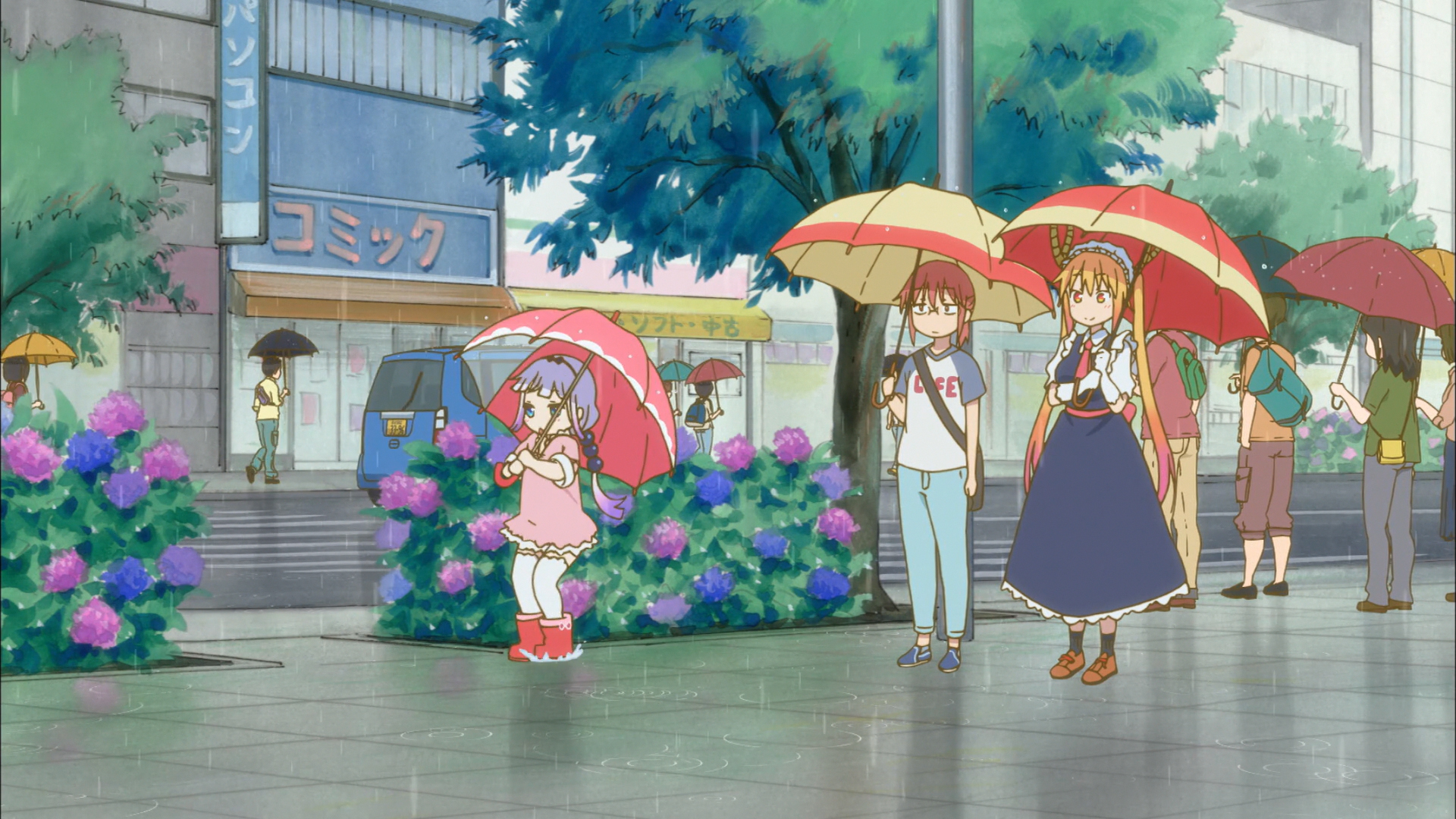
This really helps with Kobayashi’s character development, as while she starts off as feeling quite aloof and not really wanting to bother with other people, she gradually opens up over the course of the series as she bonds with the rest of the cast. There’s plenty of very heart-warming moments that involve her throughout the series, as she finds that her new-found family gives her a lot more enjoyment out of life than she had just living on her own. She really stands as the point-of-view character as, through her eyes, we get to see what mischief the dragons get up to, but she’s also pivotal in giving them all someone to bounce off and, at the end of the day, come home to.
This latter point really hits home towards the end of the series, where, due to specific circumstances, Tohru suddenly disappears, and it’s here when you can really feel that the core message of the series is “appreciate what you’ve got, while you’ve still got it”, as it explores this bizarre relationship of this short-lived human living alongside a dragon with a much longer lifespan, putting Tohru in a bit of an existential crisis when she realises this.
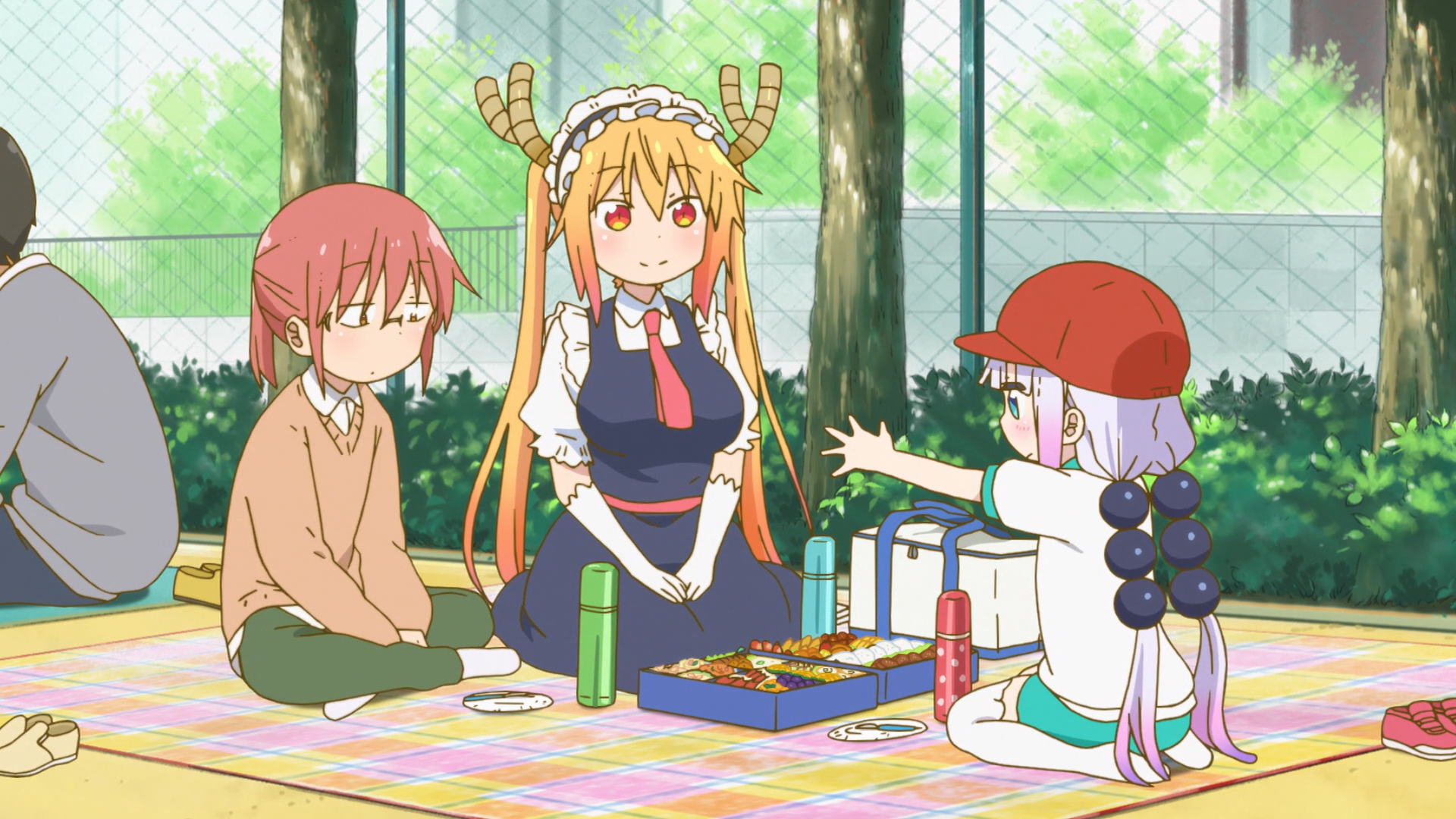
Visually the series is an absolute delight, with its watercolour-like art style working really well with the overall story, and while this doesn’t really require that much intense animation with it being a slice-of-life series, it’s still really solid in that regard, with Kyoto Animation obviously putting a lot of love and care into the production. What few action sequences it has, when the dragons transform and fight it out amongst themselves, are really impactful and are good for creating that disparity between their dragon and human forms as they unleash their immense powers. The character designs also come off as really strong, which is a credit to the manga’s original author.
The soundtrack, composed by Masumi Itou, is also really good with some light-hearted and charming pieces that fit the series well. I also love the opening and ending themes, with fhána’s “Aozora no Rhapsody” and “Ishukan Communication”, sung by the main cast, being extremely catchy J-pop numbers.

Speaking of the cast, I love the Japanese language version as the voices fit the characters so well, with Mutsumi Tamura delivering a very down-to-earth and grumbling Kobayashi, Yuki Kuwahara giving us a very excitable Tohru, and Maria Naganawa working really well to make Kanna as cute as possible. The English dub, however, is a hard one to talk about as it did bring the fanbase into disrepute, and while I can clearly see what they are going for in making it more accessible to a Western (and in particular, a US) audience, the script does change the meaning of some scenes unnecessarily, and some of those in a particularly politically charged way. The voice acting itself is pretty competent, but the child characters just don’t work as well as their Japanese counterparts.
Manga Entertainment’s release includes all 13 episodes of the series, plus the OVA and the Miss Kobayashi’s Dragon Something shorts. The OVA is an absolute hoot, showing the gang going all-out for Valentine’s Day, with Tohru trying to slip Kobayashi a love potion, which of course does not go to plan! The shorts are a bit of a throw-away extra, simply putting the different characters in an array of funny outfits. Also included are the clean opening and ending animations and some trailers for other shows.

Overall, Miss Kobayashi’s Dragon Maid is a very funny slice-of-life series with a fantastic cast of characters that play off each other well. While I didn’t enjoy some of the more fanservice-y elements as much, this still proved to be a show I really liked and got a lot of laughs out of. These types of shows don’t come up very often these days, so if you’ve been craving something like this, then it’ll definitely scratch that itch for you.


